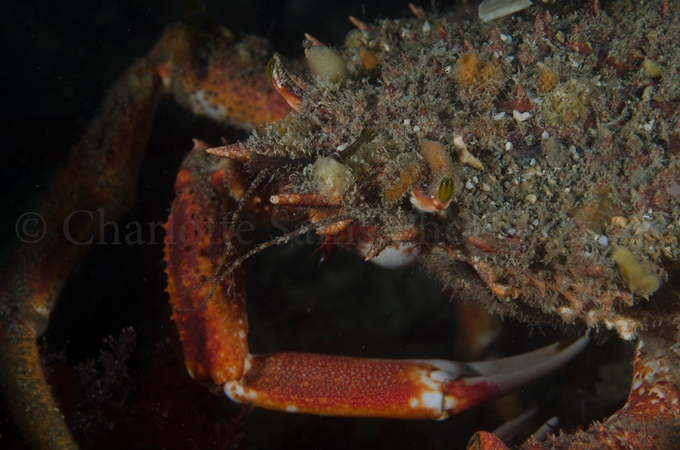Here’s some discoveries from the latest dive at the same site as the previous post, including 2 more species of nudibranch and a sea slug that I had requested a sighting of earlier in the week – what are the chances! I was definitely feeling very happy and privileged after this dive.
The first creature I saw actually provided some of the best shots, a new nudibranch for me, Polycera quadrilineata. These two shots vary to focus on the rhinophores, and then the branches upon it’s back. This was a little larger than most of the other nudibranchs sighted, probably around 3cm long, but the 105mm macro lens works wonderfully for highlighting this minute detail. This beautiful animal was fairly shallow and close to the shore, its amazing to think we have these creatures so close to home.


This nudibranch I believe is the same one featured in the last post, on a much smaller scale, as I’d estimate this one was just around 5mm long! I mistakenly intentifieded this nudibranch as a juvenile of a different species, but it was pointed out to me that the species is Ancula gibbosa, another new one for me. I particualrly like the green colours in the background. This nudi was actually floating around for a bit midwater until I took this shot, and as you can see it’s just about hanging onto the tendril of seaweed. 
More sea hares! There was an area of about 1m squared which had a few within it, but unfortuntaley they all kept hiding behind this sea lettuce and weren’t the best photographic subject. However, I did manage to see one which was really tiny, as small as the nudibranchs, which was pretty cool. The one below I think was about 2cm long. 
Another new species for me! Favorinus branchialis, a very prettily shaped nudibranch. We saw a few of these scattered around the site throughout the dive, but this was the best subject as was a little larger and on some more open seaweed. Though not as colourful as some, I like these types of nudibranchs with the cerata upon their backs. Other British species can look very similar to this shape but much brighter colours as well. 
We also came across a Red Gurnard on the seabed, they actually almost crawl and feel they way along the sea floor, but generally are pretty static fish. This was no exception so I decided to take a few images to highlight the detail of it’s scales and the pattern near it’s mouth. These images haven’t had any lighting adjustments, and the fish are actually this fantastic bright red/orange colour, which, incidentally contrasts quite nicely against their blue eyes. 

I was swimming over some kelp and this thing causght my eye. It looked like a hydroid of sorts but was something I’d never seen at this dive site so swam down for closer look. It was between lots of roots of kelp and I had fun trying to see through the seaweed fronds but this ‘thing’ really interested me, because it had started to move of its own accord, kind of like contracting each tentacle/branch slowly. So, I took a few images of it, in the hope of identifying it later. Later, I discovered it was a burrowing sea cucumber, Neothyonidium magnum, which was not what I expected, but very cool! I was battling with my surroundings and not getting the strobe arms tangled too much at this point so didn’t take many images but here’s one-

And this next find was quite special. When reading an ID book a few days ago I came across the green sea slug, Elysia viridis. Despite having a fairly conventional form, I thought I’d would be awesome to see because it has iridescent spots along it’s body. On our way inwards from the dive I saw this slug upon some kelp, another tiny creature, about 2cm long. I took one shot, but before I could take another it let go of the kelp and started floating, not even free swimming, in the water. This resulted in me floating upside down for a few minutes, trying to circle this little slug that was gently moving around, and trying to focus on it with the camera too. I was very happy when I imported my images that I succeeded in taking some in focus! Also, in this instance I think the particles in the water work against the back background, and they look slightly like snowflakes. Though arguably, some people would have probably preferred I cloned them all out, I generally like to stick to as minimal editing as possible.


(I know it’s called a green sea slug and this one isn’t totally green, but the colour can vary and I’m pretty sure I’ve identified it correctly)
One parting shot. In the shallows, just as I was beginning to get myself out the water, my buddy waved me over to the rocks nearby. I turned my camera and strobes back on, and there about 2m deep (if that), right next to the shore, was Montagu’s blenny Coryphoblennius galerita, camouflaged on the rock. Most blenny’s have two little branched tentacles coming of their head, but this one only has one, similar to a crest. And, not to anthropomorphise, but the face on shot does make it look like it’s smiling.

Isn’t the ocean awesome!?
http://www.charlottesams.com
https://www.facebook.com/CharlotteSamsPhotography




















































